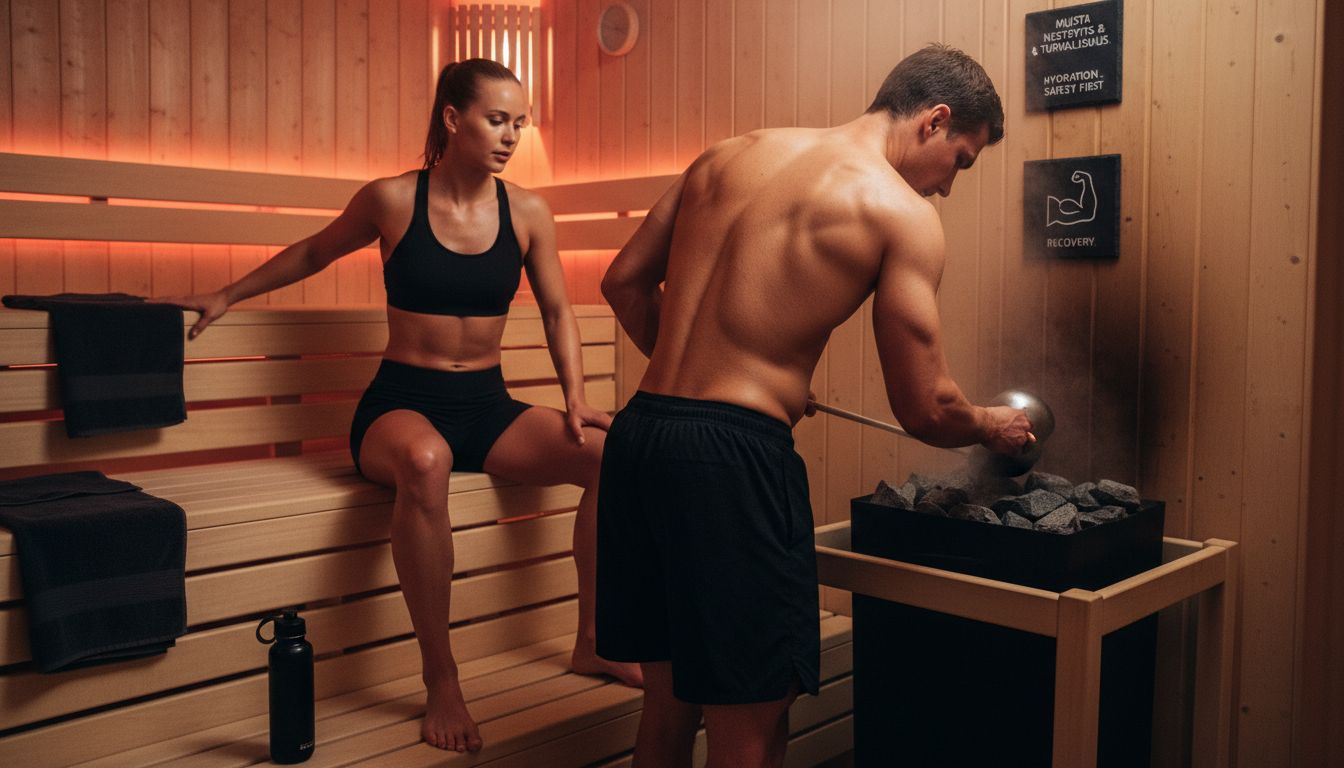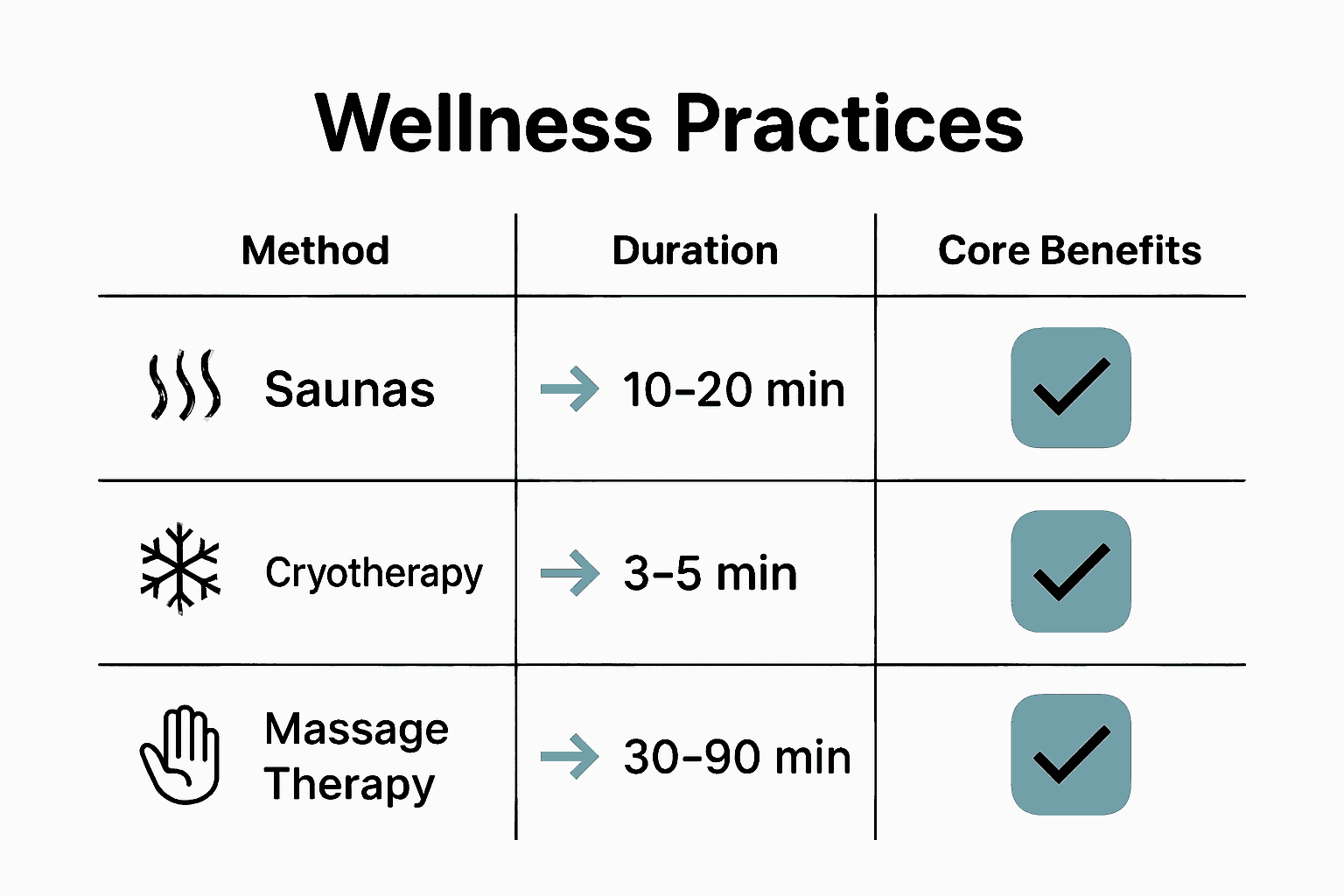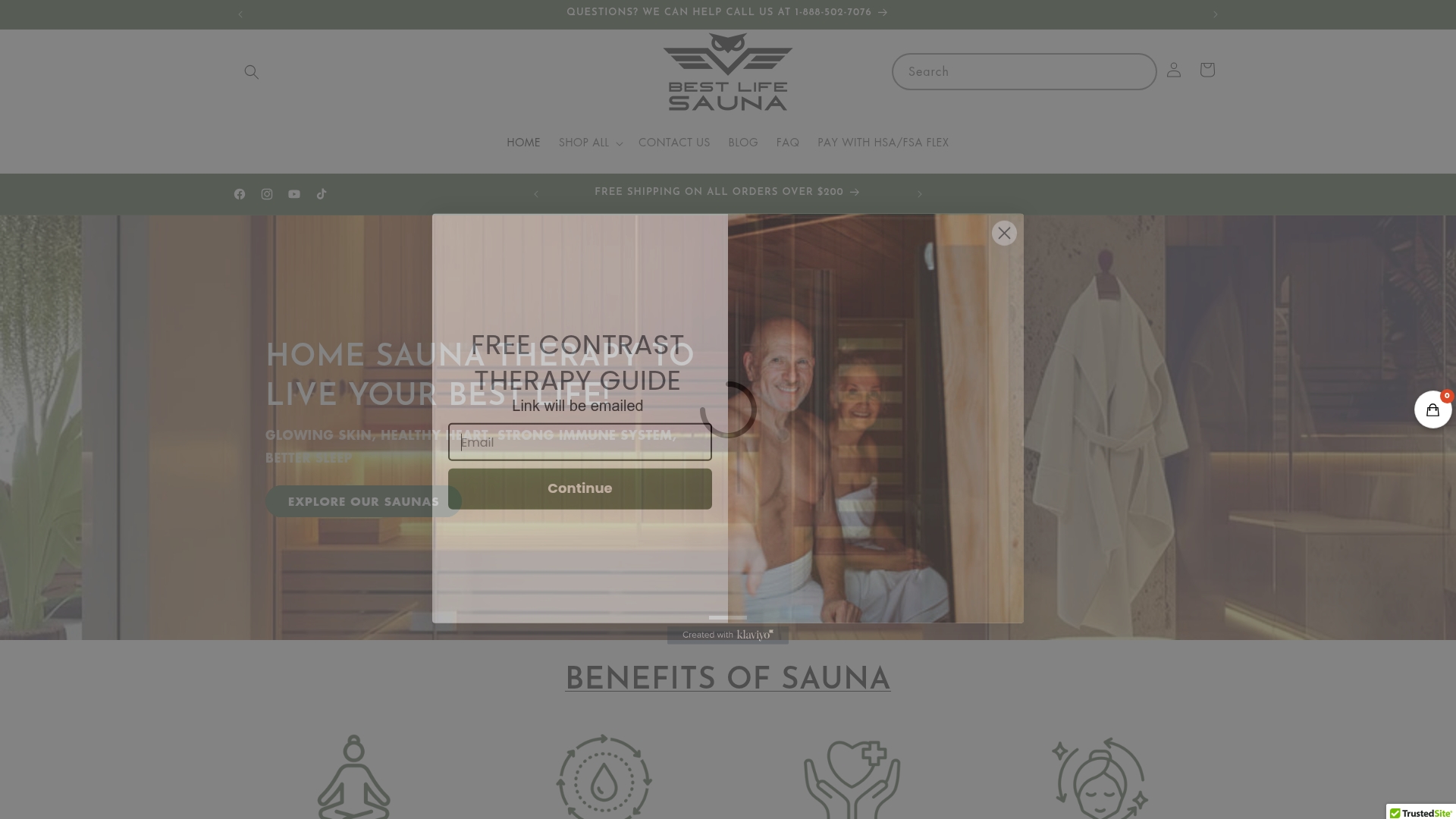
Complete Guide to Why People Love Saunas
Did you know that over 70 percent of sauna users report feeling less stressed after each session? In a world where constant pressure is part of daily life, many turn to saunas for a natural way to unwind. The mix of gentle heat, deep relaxation, and wellness benefits creates an experience that goes beyond simple comfort. Discover why saunas continue to attract people searching for both physical relief and a mental reset.
Table of Contents
- What Makes Saunas So Appealing
- Types of Saunas and How They Differ
- Health and Wellness Benefits of Saunas
- Sauna Traditions, Rituals, and Social Impact
- Safety Considerations and Common Misconceptions
- Comparing Saunas With Other Wellness Options
Key Takeaways
| Point | Details |
|---|---|
| Holistic Wellness Benefits | Saunas offer both physical and mental health advantages, including stress reduction, muscle recovery, and improved cardiovascular function. |
| Variety of Sauna Types | There are several sauna types, including Finnish, infrared, and steam, each providing unique experiences and benefits tailored to individual preferences. |
| Cultural Significance | Saunas serve as important social spaces in many cultures, offering opportunities for communal relaxation and connection beyond physical cleansing. |
| Safety and Usage Guidelines | It’s essential to maintain proper hydration and limit sauna sessions to 15-20 minutes, especially for individuals with certain health conditions. |
What Makes Saunas So Appealing
Saunas have become a wellness sanctuary for those seeking relaxation, physical rejuvenation, and a momentary escape from daily stress. According to Mayo Clinic, these heated environments are appealing because they induce physiological reactions similar to moderate exercise, such as vigorous sweating and increased heart rate.
The allure of saunas extends far beyond simple heat exposure. Physiological benefits make these spaces incredibly attractive to health-conscious individuals. Users experience a range of advantages that contribute to their growing popularity:
- Stress Relief: The warm environment promotes deep relaxation
- Muscle Recovery: Heat helps reduce muscle tension and soreness
- Circulation Improvement: Increased body temperature stimulates blood flow
- Mental Clarity: The meditative quality of sauna sessions helps clear the mind
As Cleveland Clinic notes, saunas offer a relaxing environment that provides a profound sense of well-being. The combination of heat, quiet, and physiological changes creates a unique wellness experience that feels both therapeutic and indulgent. Unlike other forms of exercise or relaxation, saunas provide immediate sensory feedback - you can feel your body responding, muscles unwinding, and stress melting away.
What truly sets saunas apart is their holistic approach to wellness. They aren’t just about physical health but also mental restoration. The enveloping warmth creates a personal sanctuary where external pressures fade, replaced by a sense of calm and introspection. Whether you’re an athlete seeking muscle recovery, a professional managing stress, or someone simply craving a moment of tranquility, saunas offer a universal appeal that transcends age, fitness level, and lifestyle.
Types of Saunas and How They Differ
The world of saunas is wonderfully diverse, offering multiple experiences tailored to different preferences and wellness goals. Sauna Society reveals that saunas vary significantly in type, including traditional Finnish saunas, infrared saunas, and steam rooms, each distinguished by unique heating methods, temperature ranges, and humidity levels.
Traditional Sauna Types
Several core sauna varieties provide distinct experiences:
- Finnish Sauna: The classic wood-heated room with high temperatures and low humidity
- Infrared Sauna: Uses light waves to heat the body directly, operating at lower temperatures
- Steam Room: High humidity environment with wet heat, different from dry saunas
- Wood-Burning Sauna: Authentic experience using traditional wood stove heating
According to Sleep Advisor, common sauna types include wood-burning, electrically heated, infrared, and smoke saunas.
 Electrical saunas have gained popularity for their convenience, allowing precise temperature control and easy installation in home settings.
Electrical saunas have gained popularity for their convenience, allowing precise temperature control and easy installation in home settings.
The primary differences between sauna types lie in their heating mechanisms and sensory experiences.
Infrared saunas, for instance, warm the body directly at lower temperatures, making them more accessible for those who find traditional high-heat saunas uncomfortable. Traditional Finnish saunas, by contrast, heat the air around you, creating an intense, enveloping warmth that triggers profound sweating and physiological responses.
Choosing the right sauna depends on personal preference, health goals, and comfort level. Some individuals prefer the intense dry heat of traditional saunas, while others might appreciate the gentler, more targeted warmth of infrared technology. Regardless of type, each sauna offers a unique path to relaxation, stress relief, and potential health benefits.
Here’s a comparison of the main sauna types and their distinctive features:
| Sauna Type | Heating Method | Typical Temperature | Humidity Level |
|---|---|---|---|
| Finnish Sauna | Wood stove or electric | 150-195°F | Low |
| Infrared Sauna | Infrared light panels | 120-150°F | Very Low |
| Steam Room | Steam generator | 110-120°F | High |
| Wood-Burning Sauna | Traditional wood stove | 160-200°F | Low |
| Electrical Sauna | Electric heater | 150-195°F | Low |
Health and Wellness Benefits of Saunas
Saunas represent more than just a relaxation technique - they’re a holistic wellness experience with profound health implications. Cleveland Clinic highlights that regular sauna use may offer significant health benefits, including improved cardiovascular function, muscle relaxation, and comprehensive stress reduction.
Key Wellness Advantages
The health benefits of saunas are multifaceted and impact both physical and mental well-being:
- Cardiovascular Health: Promotes improved heart function and circulation
- Stress Reduction: Triggers relaxation responses and reduces cortisol levels
- Muscle Recovery: Helps reduce muscle tension and accelerate healing
- Detoxification: Supports natural sweating and toxin elimination processes
Mayo Clinic suggests that infrared saunas may provide additional health benefits, particularly for individuals managing chronic health conditions. The targeted heat can penetrate deeper into body tissues, potentially offering more intensive therapeutic effects.
Beyond physical benefits, saunas create a powerful mental reset. The combination of heat, quiet, and intentional relaxation helps lower anxiety, improve sleep quality, and provide a meditative environment. For many, a sauna session is not just a physical treatment but a comprehensive wellness practice that reconnects mind and body, offering a rare opportunity for complete relaxation in our fast-paced world.
While research continues to explore the full spectrum of sauna benefits, the existing evidence suggests these heated sanctuaries are more than a luxury - they’re a proactive approach to maintaining holistic health. Whether you’re an athlete seeking muscle recovery, a professional managing stress, or someone committed to preventative wellness, saunas offer a natural, enjoyable pathway to improved physical and mental well-being.
Sauna Traditions, Rituals, and Social Impact
Saunas are far more than just heated rooms - they are cultural institutions with deep-rooted social significance. Sauna Society reveals that sauna traditions vary globally, with practices like the Finnish löyly (the steam created when water is thrown on hot stones) emphasizing the profound cultural and social dimensions of sauna bathing.
Global Sauna Traditions
Different cultures have unique sauna rituals that reflect their social dynamics:
- Finnish Culture: Saunas as sacred spaces for purification and connection
- Russian Banya: Intense heat and social bonding through steam and birch branch beating
- Japanese Onsen: Hot springs and communal bathing as spiritual cleansing
- Native American Sweat Lodges: Ceremonial healing and spiritual transformation
Fanac highlights that in Finland, saunas are not just amenities but integral to daily life, serving as communal spaces for relaxation, socialization, and even important life discussions. They transcend mere physical cleansing, becoming platforms for deep personal and collective experiences.
The social impact of saunas extends beyond cultural boundaries. In many societies, these heated spaces create unique environments where social hierarchies dissolve, conversations flow more freely, and human connections are forged in a shared, vulnerable experience. Whether in a corporate retreat, a family gathering, or a community center, saunas provide a rare neutral ground where people can interact authentically.
Ultimately, sauna traditions remind us that wellness is not just an individual pursuit but a collective journey. These rituals demonstrate how shared physical experiences can bridge cultural divides, foster understanding, and create moments of genuine human connection. From the steamy rooms of Finland to sweat lodges around the world, saunas continue to be powerful spaces of healing, dialogue, and community building.
Safety Considerations and Common Misconceptions
Saunas offer tremendous wellness benefits, but understanding their proper use is crucial for a safe and enjoyable experience. Cleveland Clinic emphasizes that while saunas are generally safe, users must take specific precautions to prevent potential health risks.
Key Safety Guidelines
Important safety considerations for sauna use include:
- Hydration: Drink water before, during, and after sauna sessions
- Time Limitation: Restrict sessions to 15-20 minutes
- Health Screening: Consult healthcare providers if you have pre-existing conditions
- Temperature Awareness: Monitor your body’s response to heat
Mayo Clinic notes that infrared saunas are safe for most people, but individuals with certain health conditions should seek medical advice before regular use. This is particularly important for those with cardiovascular issues, chronic health conditions, or who are pregnant.
Common misconceptions about saunas can lead to unrealistic expectations and potential health risks. Contrary to popular belief, saunas are not a quick weight loss solution. The temporary weight reduction is primarily water loss, which returns quickly after rehydration. Additionally, saunas should not be seen as a replacement for medical treatment or exercise, but rather as a complementary wellness practice.
To maximize safety, listen to your body and start with shorter, less intense sessions. Pay attention to signs of discomfort like dizziness, rapid heartbeat, or excessive sweating. If you’re new to sauna use, begin with lower temperatures and gradually increase duration and heat as your body adapts. Remember, the goal is relaxation and wellness, not endurance or pushing physical limits.
Comparing Saunas With Other Wellness Options
Wellness technologies have expanded dramatically, offering multiple paths to physical and mental restoration. Sauna Finder highlights that traditional and infrared saunas represent unique approaches within the broader wellness landscape, each offering distinctive healing mechanisms.
Wellness Comparison Matrix
Key differences between wellness options include:
- Saunas: Heat-based therapy targeting entire body
- Hot Yoga: Dynamic movement with elevated temperatures
- Cryotherapy: Extreme cold exposure for recovery
- Massage Therapy: Targeted muscle manipulation
- Meditation: Mental and spiritual restoration
Unlike many wellness interventions that focus on single dimensions, saunas provide a comprehensive experience. Where hot yoga demands physical movement, saunas allow complete relaxation. Cryotherapy offers short, intense cold exposure, while saunas provide sustained, gentle heat that promotes systemic healing.

The primary advantage of saunas lies in their accessibility and holistic impact. Meditation requires significant mental discipline, massage can be expensive, and cryotherapy might feel uncomfortable. Saunas, by contrast, offer an intuitive, low-barrier wellness experience that simultaneously addresses physical recovery, stress reduction, and mental clarity.
Ultimately, the best wellness approach is personalized and integrated. Saunas shouldn’t replace other health practices but complement them. Think of them as a powerful tool in your wellness toolkit - adaptable, gentle, and capable of providing profound physiological and psychological benefits with minimal technical skill or extraordinary effort required.
Discover Your Perfect Sauna Experience at Best Life Sauna
The article highlights how saunas offer more than just heat. They provide vital benefits like stress relief, muscle recovery, improved circulation, and a mental reset. If you are looking to embrace these holistic wellness benefits in your own home, you face choices like selecting between traditional, infrared, or wood-burning options that suit your comfort and health needs. The challenge is finding a trusted source that offers premium quality products aligned with your wellness goals and lifestyle.
Best Life Sauna understands your desire for deep relaxation and improved wellbeing. Whether you seek a soothing infrared sauna to gently warm your body or a classic traditional sauna to soak in intense dry heat, our extensive selection caters to every preference. We also provide complementary products such as cold plunge tubs and hot tubs, enhancing your recovery and tranquility rituals.
Experience the transformative power of sauna bathing with products crafted for comfort and durability. Enjoy our price match guarantee, free shipping on orders over $200, and confident shopping supported by positive customer reviews.
Ready to heal, unwind, and refresh your mind and body today?
Explore premium sauna options now and step into a new world of wellness.

Find your ideal sauna and unlock lasting relaxation. Visit Best Life Sauna to start your journey toward better health and serenity. Don’t wait – your personal wellness sanctuary awaits.
Frequently Asked Questions
What are the health benefits of using a sauna?
Saunas offer numerous health benefits, including improved cardiovascular health, muscle recovery, stress reduction, and detoxification through sweating.
How do different types of saunas differ from each other?
Saunas differ in heating methods, temperature ranges, and humidity levels. For example, Finnish saunas provide high heat and low humidity, while infrared saunas use light waves for direct body heating at lower temperatures.
How long should I stay in a sauna for optimal benefits?
It is recommended to limit sauna sessions to 15-20 minutes to avoid overheating, while also ensuring you stay hydrated throughout your time in the sauna.
Can sauna use help with muscle recovery after exercise?
Yes, sauna use can aid in muscle recovery by reducing muscle tension and soreness, helping to relax muscles after physical activity.

